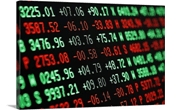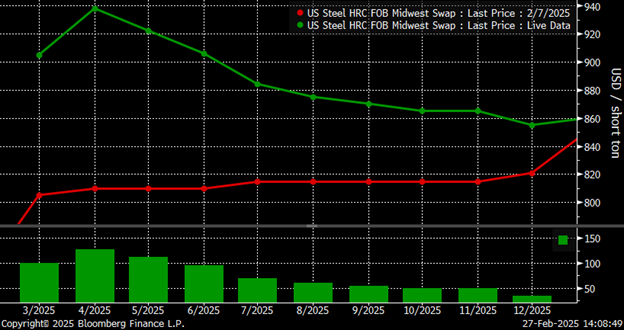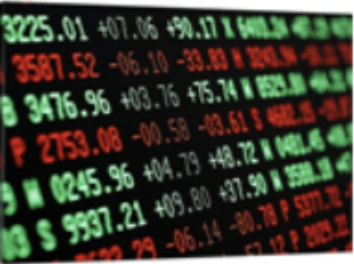Futures

Hot Rolled Futures: Some Profit Taking
Written by Jack Marshall
April 1, 2021
The following article on the hot rolled coil (HRC), scrap and financial futures markets was written by Jack Marshall of Crunch Risk LLC. Here is how Jack saw trading over the past week:
Hot Rolled
Liquidation has led to some near-term retracement of hot rolled futures prices after a very long runup.
The first week in May left HR markets breathless as Q3’21 HR futures values were up $137/ST as of the settlement on May 10 and up $110/ST in Q4’21 and up $173/ST in Q1’22.
Today HR markets appear to have been influenced by global financial market concerns over U.S. inflation numbers and the subsequent liquidation by investors and traders. HR futures were limit down in a number of months across the curve by the end of the trading day and Q3’21 HR futures had given back 45% of the value they had gained from May 3 to May 10. And Q4’21 and Q1’22 HR futures gave back 58% and 47% of their settlement value gains from May 3 to May 10.
Until today, sellers have been relatively scarce, forcing buyers to pay up. In spite of today’s brisk selling, HR futures are still up on the month. Lead times have changed little, and while near-term auto demand is hampered by global supply chain issues, recent memos from major auto companies suggest that demand will pick up briskly as the issues resolve.
Activity in HR futures has continued to pick up. This month open interest is up to almost 32,000 contracts, which is the equivalent of two hedging/trading counterparties having open HR futures positions of 640,000 ST each. About 90% of that HR future open interest lies in the spot month through Dec’21 futures months. This month’s HR futures volume has been fairly brisk with almost 9,000 contracts trading through today. So buyers of 180,000 ST and sellers of 180,000 ST of HR futures so far this month.
Scrap
BUS settled sideways for May at $564.07. For some an unexpected surprise. For much of the last month, May was trading at $600 or above as strong HR futures prices were expected to pull up the BUS futures via the metal margin spread. While the Apr’21 metal margin settled at (1365 HR-565 BUS = 800 MM) current implied May metal margin looks likely to be (1500/1510-564=936/946). Up until today’s HR selloff, expectations so far have not been met as the metal margin spread has continued to widen in the nearby months. Recent price increases in pig iron and 80/20 export scrap could buoy BUS price expectations. Today Q4’21 BUS traded at $675/GT, a healthy $111/GT over May’21 BUS settle.

Jack Marshall
Read more from Jack MarshallLatest in Futures

HR Futures: Nascent rally in HRC futures settles above 6-week downtrend
The CME Midwest HRC futures market’s response to Trump’s election and subsequent comments about blanket 25% tariffs on Canada and Mexico was surprisingly counterintuitive.

HR Futures: Market at crossroads after turbulent run
The market appears to be pausing after a turbulent run. But tension remains just beneath the surface. With net long positioning still elevated, sentiment-driven selling could quickly reignite volatility. Still, supply constraints and limited imports are laying the groundwork for a resilient physical market. This moment of calm feels more like a crossroads than a conclusion.

HR Futures: Traders’ views mixed as market navigates tariffs
A look at the HR futures market.

Market pressures trigger HR futures reversal
Market dynamics are shifting rapidly, with futures pricing diverging from physical fundamentals, creating a complex landscape for steel traders.

HR Futures: Correction in market after big rally
Another eventful week in the physical and financial steel markets is coming to a close, but with a markedly different tone than the last update at the end of February.
